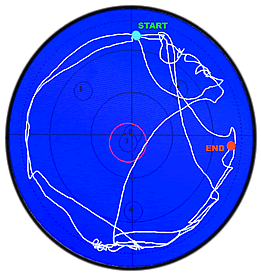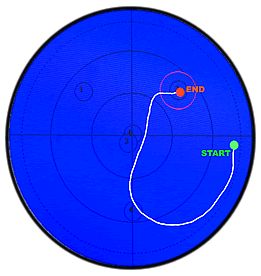This page has been archived and is being provided for reference purposes only. The page is no longer being updated, and therefore, links on the page may be invalid.
|
Read the magazine story to find out more. |
|
|
|
|
Antioxidants, Over Time, Support Aging Minds
By Rosalie Marion BlissAugust 6, 2007
A change in diet could stall or reverse some of the functional losses in brain power that occur with aging, at least if humans react to the diet the same way rats do. That's according to the results of a study, conducted by Agricultural Research Service (ARS) scientists, in which "elderly" rats that were fed a high-antioxidant diet—for the equivalent of about 10 years in humans—reversed age-related shortfalls in neuronal and cognitive function. Cognitive function involves the ability to use information to meet the challenges of daily living.
Neuroscientist James Joseph, psychologist Barbara Shukitt-Hale and molecular biologist Francis Lau described the study and others in a review article appearing in Neurobiology of Aging.
The scientists work at the U.S. Department of Agriculture's Jean Mayer Human Nutrition Research Center on Aging (HNRCA) in Boston, Mass. Joseph leads the HNRCA's Neuroscience Laboratory. ARS is USDA's chief scientific research agency.
In one of the studies, three groups of rats—equivalent in age to 63-year-old-humans—were fed extracts of either spinach, strawberry or blueberry along with their chow. A control group was fed only standard chow. When the rats were equivalent in age to 73-year-old humans, their performance levels were measured.
Rats fed the blueberry extract far outperformed their peers while traversing a rotating rod to test balance and coordination. Further laboratory examination of the blueberry-fed rats showed much higher levels of dopamine in the brain than was found in rats among the other groups. Dopamine is one of several chemical neurotransmitters that help the brain's billions of neurons "talk" to one another. It plays a role in many brain functions, including the way the brain controls movements.
Further studies with human volunteers are needed to assess whether similar improvements would be found in humans.
Read more about this research in the August 2007 issue of Agricultural Research magazine.


